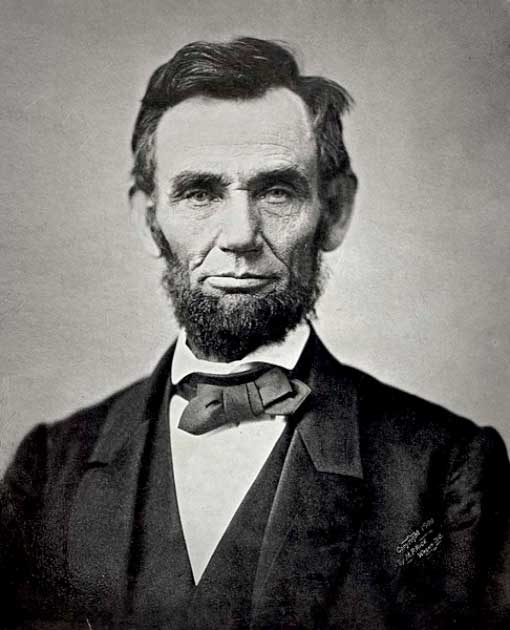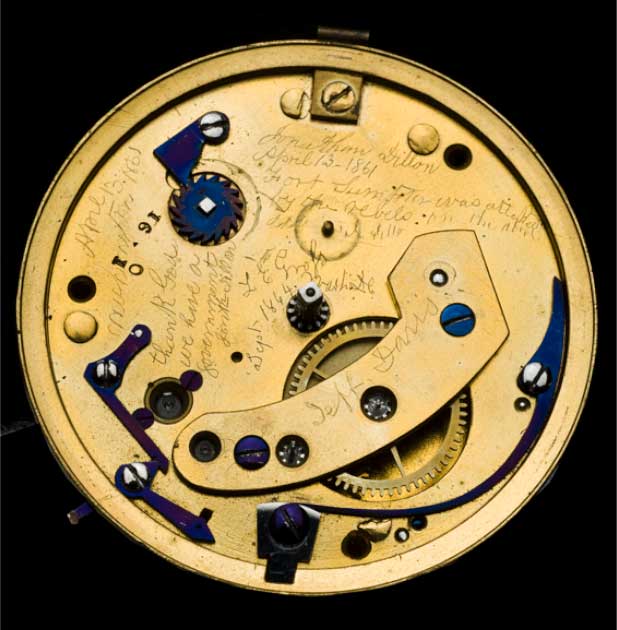A pocket watch is an accessory that many own even today. In the era of digital watches and phones that tell us the time, you will not expect people to be interested in a pocket watch unless it has some other unique value, and that is certainly true of Abraham Lincoln’s watch.
In Lincoln’s time, pocket watches were commonly used not just to tell the time, but also as a luxury accessory, just like a Rolex would be today. Abraham Lincoln certainly owned more than one pocket watch, but one of them is a little more mysterious that the others.
Abraham Lincoln was known as a plain dealer, not tempted by the vanities of appearance. However, he did own a few things that advertised his status in society. This particular gold pocket watch was one of them.
In the 18th and 19th centuries, a gold pocket watch was a status symbol, a sign of success that many distinguished people wore. The otherwise humble President bought the 18 carat gold pocket watch as he rose through the political ranks. The jeweler who created the case for the pocket watch was George Chatterton.
The Inscription of 1861
At first look, Abraham Lincoln’s watch would look like any 18th or 19th century watch that gentlemen wore. Initially, there was nothing special about the pocket watch, aside from its famous owner of course.

However, something odd happened to the watch one day when the President gave it to a repairman after running into problems with it. After the watch repairman had finished repairing the pocket watch, he left a message between the cogs and gears of the watch.
Why was there a message, though? Well, on April 13, 1861, when the gold watch of Abraham Lincoln found its way to the repairing table of Jonathan Dillon at M.W. Galt and Co. Jewelers, just when he was screwing on the dial on the repaired watch, Mr. Galt approached him. Galt told him that there had been shots fired at Fort Sumter.
Fort Sumter was a strategic and political asset of the United States, a federal property in South Carolina. However, after Lincoln had won the 1860 Presidential election promised to make slavery illegal, seven states had seceded from the Union, including South Carolina.
The fort was manned and protected by the Union Army, and it seemed that the South Carolina militia had attacked the fort: the act of firing shots at Fort Sumter was an outright act of war. When Dillon heard of the news, he knew that he was witnessing history in the making.
He knew that he had the President’s watch and wanted to put the incident down in writing. Dillon was not wrong in his assumptions, as the shots fired on Fort Sumter on April 12, 1861, and the surrender of the garrison, directly led to the American Civil War.
Forty-five years after the incident, Jonathan Dillon claimed in front of the New York Times that he had inscribed the words, “The first gun is fired. Slavery is dead. Thank God we have a President who at least will try”. But Lincoln’s watch was sacrosanct, and nobody wanted to open it to see if Dillon was telling the truth.
The Reopening of Abraham Lincoln’s Watch
In 2009, the descendants of Dillon contacted Harry Rubenstein, the chief curator of the Abraham Lincoln bicentennial exhibit, to suggest opening the famous gold watch. They wanted to see if the story was true: had Dillon really left a message for his President?
The curator had his doubts about reopening and possibly damaging the old watch as it was a complex piece of machinery and had minute parts. The watch was a valuable historical artifact, and the curator did not want to disrespect history or the spirit of Abraham Lincoln.
- The Curse of Tippecanoe: Are some US Presidents Fated to Die in Office?
- Rachel Jackson: Andrew Jackson’s Bigamist Wife?
However, he finally went ahead with the task, and in March 2009, centuries after the original watch was bought, it was carefully opened by the watchmaker George Thomas. It was then that the secret message was revealed in its true form. It was true that Jonathan Dillon had inscribed a passionate and patriotic message inside the watch. However, the words did not match the words told by the inscriber himself.

Upon close inspection of the watch, one can see the following inscription: “Fort Sumpter was attacked by the rebels. Thank God we have a government on it”. What the watch repairman remembers and what is inscribed are a little different from each other, but it was true: Dillon had noted to his President, in secret, that a momentous task lay ahead of him.
Historians believe that what Dillon said in 1906 was truly what he had recalled writing. His sentiments behind the message were what he quoted as the inscription. At the time of the inscription, the watch repairman must have been rushed and roughly wrote the message.
Maybe he ran out of time to carefully write the entire message on the watch. Regardless of all that, it is believed that Dillon did write the message and intended to write what he said. But this was not the only secret the watch gave up when it was opened: apart from the one message about Fort Sumter, there were two more messages inscribed on the watch.
The other two messages were less clear, reading “LE Grofs Sept 1864 Wash DC” and “Jeff Davis”. Many believe that the “Jeff Davis” refers to Jefferson Davis, the American Confederacy leader during the Civil War. It is unlikely that Jefferson Davis got hold of the watch after the Civil War somehow and inscribed his name on the watch: the inclusion of the name is something of a mystery.
It is believed that the “LE Grofs Sept 1864 Wash DC” is an inscription from another jeweler who polished it in the later years. It is possible that the jeweler was a supporter of the Confederacy and wrote the name “Jeff Davis” as a sign of solidarity. The irony of inscribing the Confederate leader’s name on Lincoln’s watch was also surely not lost on him.
Top Image: Abraham Lincoln’s pocket watch contained not one hidden message but several. Source: Kevin Burkett / CC BY-SA 2.0.
By Bipin Dimri